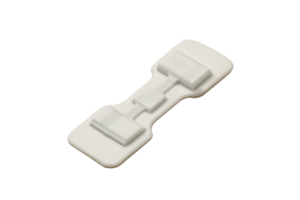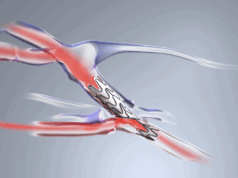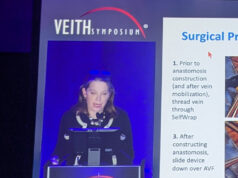This advertorial is sponsored by Alio
With one in three people living with diabetes and one in five with hypertension, the risk of chronic kidney disease (CKD) is increasing across the globe. Around 700 million people are estimated to have CKD. That number increases to 850 million people including acute kidney injury, which translates to more than 10% of the global population. This increasing incidence warrants a significant need for renal replacement therapy—it is expected around 5.4 million people will require dialysis or transplant by 2030 with 15–20% of the patients dying within the first 12 months of starting dialysis.
A functioning dialysis access is an essential aspect of treating patients with CKD and end-stage kidney disease (ESKD). Timely dialysis access (haemodialysis arteriovenous fistula/graft [AVF/G] or peritoneal dialysis catheter insertion), preserving the function of AVF/G with early diagnosis of failure, and a patient engaged surveillance of the dialysis access are challenges faced by patients and their clinical team. Despite the use of surveillance strategies, point-of-care ultrasound, and other advances, most care is delivered at specialist centres, requiring patients to travel to centres repeatedly for diagnostic and therapeutic interventions.
Remote patient monitoring (RPM) is key to enhancing dialysis access surveillance. With continuous measurement of dialysis access status, RPM can provide more insight into the access pathophysiology, improving patient engagement towards their care. Furthermore, it enables access surveillance without the constraints faced by healthcare providers, such as trained staff, frequency of in-centre visits, timely review, and early alert to the patients’ clinical state. A solution with the ability to measure key information for CKD and ESKD patients remotely and proactively is paramount to address this unmet need.

Alio SmartPatch™ is such a solution—a wearable biosensor and US Food and Drug Administration (FDA)-cleared, non-invasive, wireless medical device that remotely monitors the patient’s dialysis access with timely notifications for healthcare providers to intervene. The Alio remote monitoring platform combines this differentiated, multisensor wearable SmartPatch with a provider-based portal for sequential tracking of patients’ physiological metrics. These metrics include basic vitals, haematologic parameters, and potassium, as the world’s first to measure abnormal serum potassium indicator. The SmartPatch operates in conjunction with a hub data relay system and an end-to-end cloud software data path.
The SmartPatch also contains a microphone, and when placed over the AVF/G access, it collects a 15-second, reviewable acoustic recording of the AVF/G access. Alio has developed an automated, machine-learning method of analysing the acoustic sample. In the proof-of-concept study comprising of 692 reads from 28 patients, Alio’s prediction algorithm was able to detect patency of AVF/G (flow or no flow) with sensitivity of 79.3% and specificity of 95.3%. Further studies are planned to evaluate the impact on clinical practice, patient engagement, and cost-effectiveness in delivering a remote surveillance of dialysis access.
The Alio SmartPatch and its ability to measure patency of AVF/G offers a unique opportunity to deliver patient-centred, personalised monitoring of CKD and ESKD patients through frequent remote monitoring. With additional metrics under development, the Alio team looks ahead to offering a comprehensive, proactive and predictive renal failure care solution for patients and healthcare professionals.
References:
- Francis A, Harhay M N, Ong, A C M, et al. Chronic kidney disease and the global public health agenda: an international consensus. Nature Reviews Nephrology. 2024; 3 Apr. doi: 10.1038/s41581-024-00820- 6. Online ahead of print. PMID: 38570631.
- Whittaker D R, Miller F, Shimasaki N, et al. Development of a machine-learning based, remote-monitoring system for the automated detection of the periodic acoustic signal associated with the bruit of an AV access. Journal of Vascular Surgery. 79; 4, 26S. April 2024.
- Miller F, Murray J, Budhota A, et al. Evaluation of a wearable biosensor to monitor potassium imbalance in patients receiving hemodialysis. Sensing and Bio-Sensing Research. 2023; 40:2214-1804.












